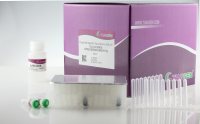DNA Vaccines
互联网
1303
The use of DNA and mRNA as vectors for immunization is a relatively recent development in the field of vaccines. The first paper demonstrating the efficacy of a DNA vaccine in an animal model of viral disease was published in 1993 (1 ). The rationale for using nucleic acids as vaccines came from the Initial observations that mtramuscular (im) injection of nonrephcating plasmid DNA expression vectors or mFWA-encoding reporter genes could result in the in vivo expression of proteins in mouse muscle cells (2 ). This ability to express proteins in vivo offers the opportunity to generate immune responses against foreign antigens encoded by the nucleic acid. In addition, both humoral and cell-mediated immune (CMI) responses, such as cytotoxic T-lymphocytes (CTL), can be induced. In general, CTL responses require endogenous expression of the antigen, such as during immunization with live viruses or replicating vectors, whereas subunit protein, polysaccharide conjugate, or inactivated virus vaccines generate humoral immune responses, but not CTL. Therefore, the technique of DNA injection has potential advantages over certain other vaccine technologies.






